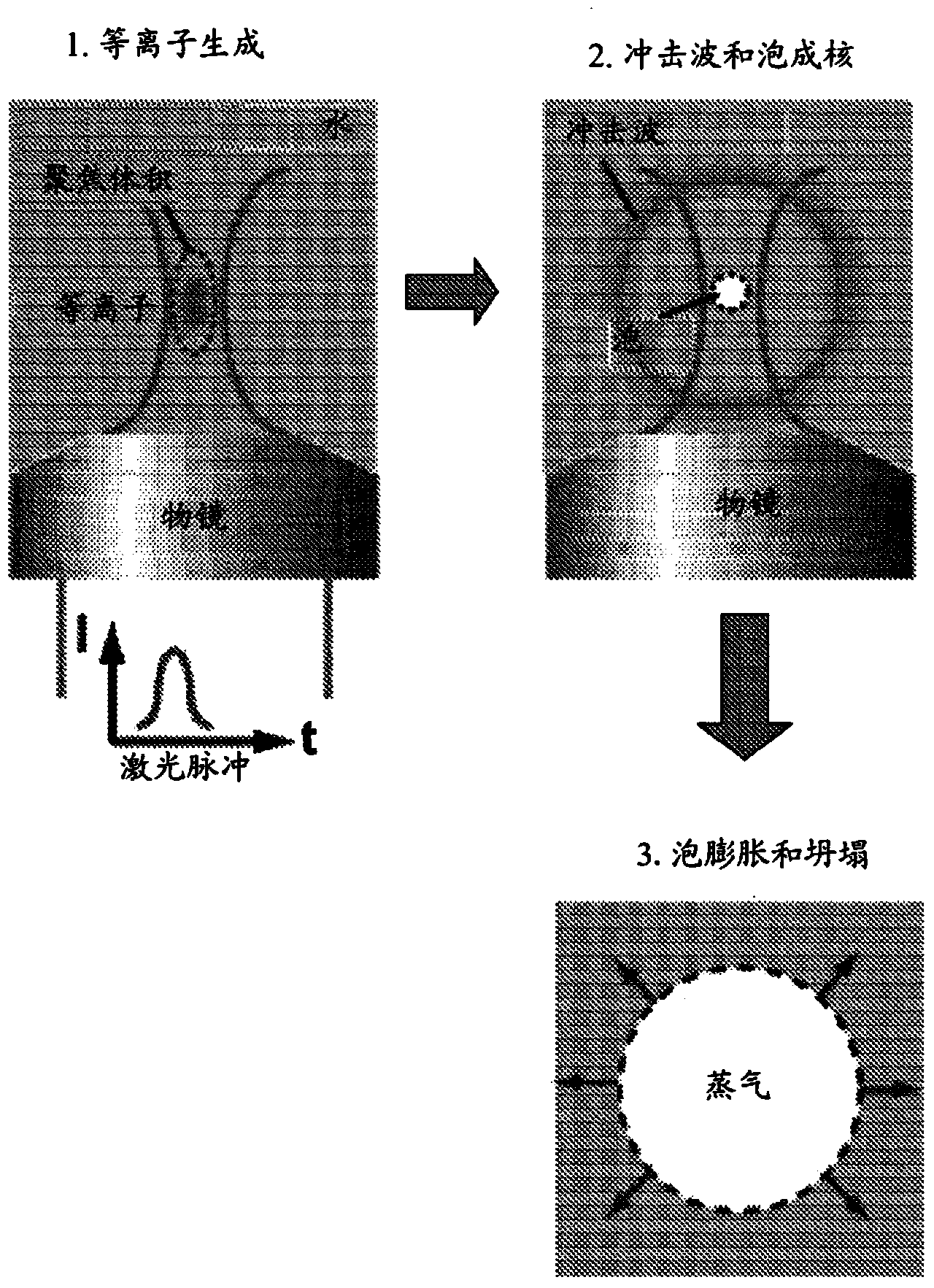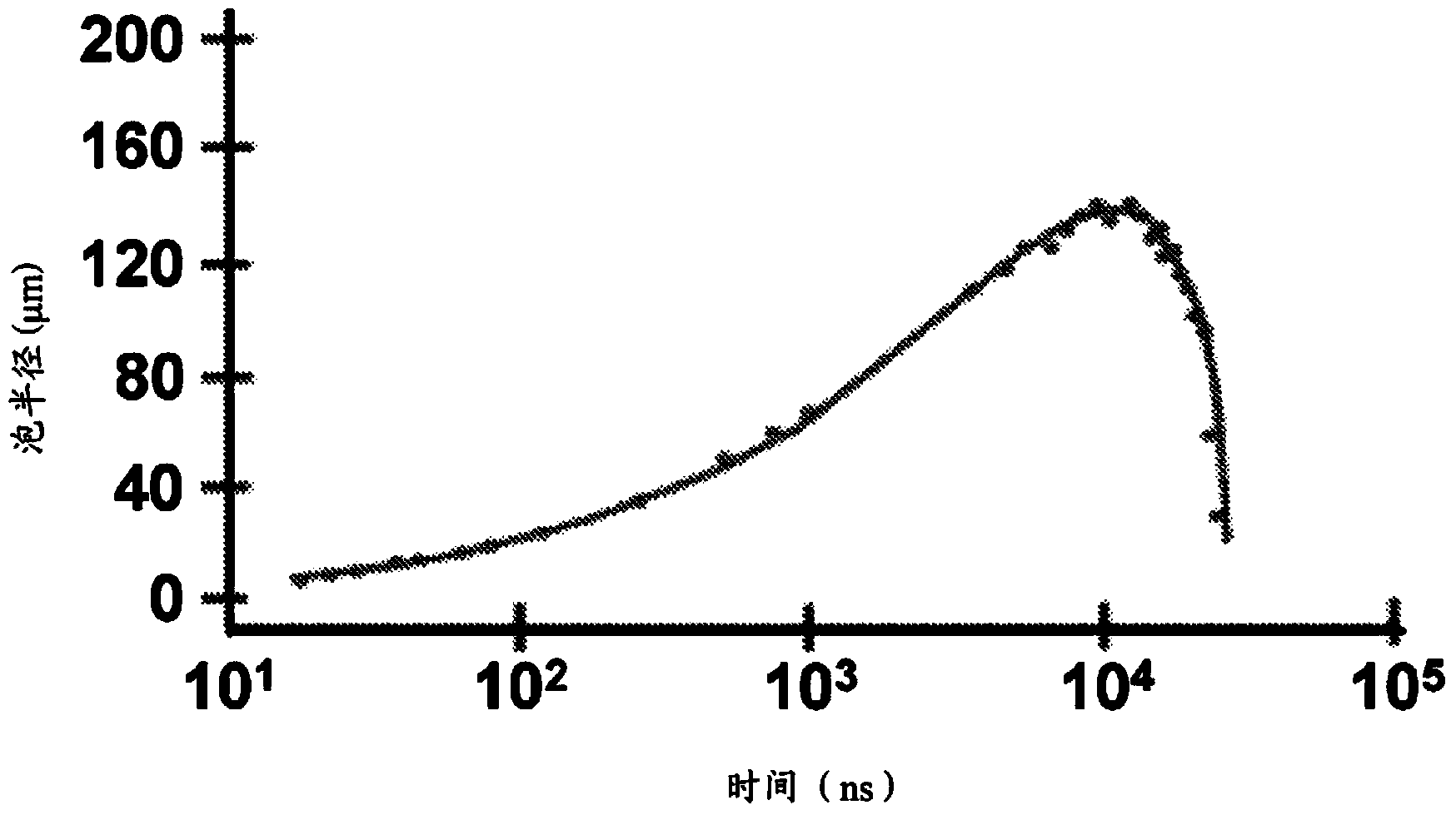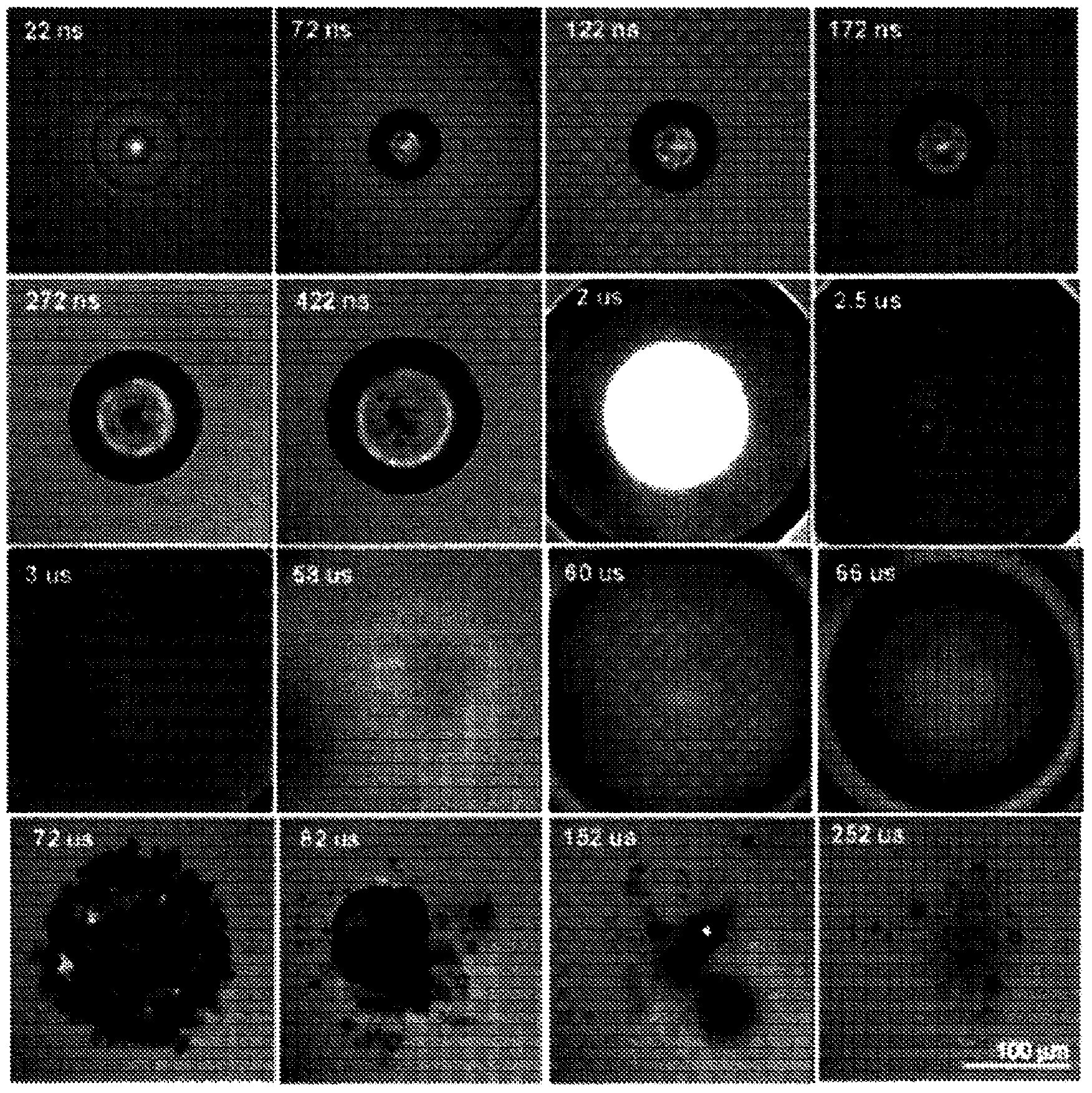High-speed on demand droplet generation and single cell encapsulation driven by induced cavitation
A droplet and cavitation bubble technology, applied in the field of microfluidics, can solve the problems of slow droplet generation, increased design equipment complexity, and incorporation
- Summary
- Abstract
- Description
- Claims
- Application Information
AI Technical Summary
Problems solved by technology
Method used
Image
Examples
Embodiment 1
[0086] Droplet generation driven by pulsed laser-induced cavitation
[0087] Constructed using standard soft lithography techniques image 3 The pulsed laser-driven droplet generation (PLDG) device shown. The PLDG device has two fluid channels, one filled with water and the other filled with oil. Both fluidic channels are 100 microns wide and 100 microns high. The fluid channels are connected by an opening configured as a nozzle, the neck of which is 30 microns wide. Adjust the flow rate in the channel to create a stable oil / water interface.
[0088] The PLDG device is actuated based on cavitation bubbles induced by laser pulses, which are generated when intense laser pulses are focused on the fluid channels containing them. Plasma formation at the focal point of the laser pulse can generate rapidly expanding cavitation bubbles, as described above. This disturbs the oil / water interface and pushes water droplets into adjacent oil-filled fluid channels to form stable wate...
Embodiment 2
[0091] Volume control of PLDG-generated droplets
[0092] The volume of PLDG can be controlled by adjusting the energy delivered by the pulsed laser as a function of laser intensity and pulse duration, location of laser excitation, or a combination thereof. Alternatively, the energy of the pulsed laser can be adjusted using a beam deflector.
[0093] Figure 9 The figure shows that the volume of droplets produced by PLDG can be controlled by adjusting these parameters. Droplets are made of Figure 9 Panels (a) to (d) show the effect of varying the laser energy at a fixed distance of 47 microns from the nozzle ( Figure 9 Among them, panel (a)=100 μJ, panel (b)=90 μJ, panel (c)=80 μJ, panel (d)=70 μJ). This produces a controlled droplet size ranging from about 55 to about 5 microns, which decreases with decreasing laser energy.
[0094] The control droplet size is shown in Figure 9 Panels (e) to (g) where the laser energy was kept constant at 100 microjoules and the di...
Embodiment 3
[0096] The consistency of the size of the droplets produced by PLDG (Consistency)
[0097] Because PLDG is an on-demand method, PLDG is able to generate droplets at different frequencies by controlling the interval between laser pulses. Figure 10 shown in 2 milliseconds ( Figure 10 panel (a)) to 100 microseconds ( Figure 10 Panel (d)) Results of continuous droplet generation for different firing intervals. The flow rate of the fluid channel receiving the droplets is adjusted to maintain the dispersion of the droplets at a high droplet generation rate.
[0098] Figure 11 Schematic liquids collected at droplet generation frequencies of 1 kHz (panel (a)) and 10 kHz (panel (b)) are shown. The droplet size is consistent despite a 10-fold difference in the velocity at which the droplets are formed. Figure 12 Results of similar studies are shown, with the intervals between laser excitations set at 2 milliseconds (panel (a)), 500 microseconds (panel (b)) and 100 microsecon...
PUM
 Login to View More
Login to View More Abstract
Description
Claims
Application Information
 Login to View More
Login to View More - R&D
- Intellectual Property
- Life Sciences
- Materials
- Tech Scout
- Unparalleled Data Quality
- Higher Quality Content
- 60% Fewer Hallucinations
Browse by: Latest US Patents, China's latest patents, Technical Efficacy Thesaurus, Application Domain, Technology Topic, Popular Technical Reports.
© 2025 PatSnap. All rights reserved.Legal|Privacy policy|Modern Slavery Act Transparency Statement|Sitemap|About US| Contact US: help@patsnap.com



